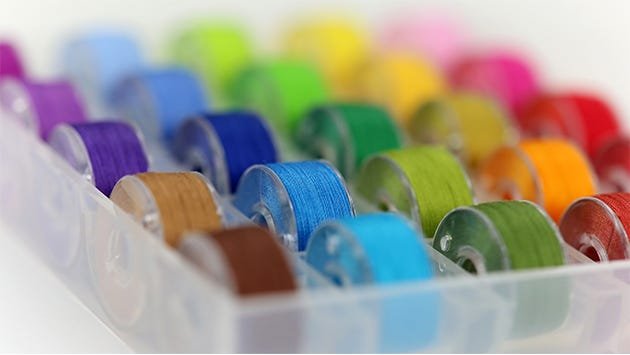Superior Education
QUILTING MYTHS
- TRUTH
- DEBUNKED
- FACTS
Busting Myths Left and Right
When it comes to thread, technique, sewing, and quilting, there's a lot of hearsay and myths which are passed to each other. Some are propagated purposely due to a financial motivation (such as mislabeling products), others by misinformed professionals including store sales staff and repair technicians, and most by innocent people just passing on what they have heard. Below are the top five myths that we've heard and the corresponding facts to prove their fallacy.
Polyester thread will tear my quilt fabric.
This is absolutely not true. Many years ago, when Hanes had a strong marketing budget for their cotton t-shirts, I called their customer service department and asked them what type of thread was used in their cotton shirts. I was passed around to a few different people and finally spoke with a department head. They were suspicious why I was asking such a strange question. I explained to them that I was a thread guy and had genuine interest in learning more about fibers. They told me that it was a polyester thread used to sew their 100% cotton shirts together. This is the case with most cotton clothing; polyester threads are used for sewing the materials together. Think of how much wear and tear your clothes go through and rarely, if ever, does the fabric degrade while leaving the polyester thread in the seams untouched.
If you have attended one of our Thread Therapy seminars, you have seen hands-on proof that this is a myth. Thread tearing into a fabric has nothing to do with the thread fiber type but with the strength of the fibers (both in the thread and in the fabric). Some cotton thread (such as glazed cotton) can be stronger and more abrasive than polyester thread.
My machine repair person said that I must use only ____ brand/type of thread.
Not true. Some have been told to use only cotton thread. Others have been told to use only polyester thread. I’m sure the person who says this means well. He/She probably just finished cleaning a machine full of horrible lint or other problems and intended to advise the owner to use a better thread. The advice may be spoken out of frustration or misinterpreted. Imagine a car company saying you must use only Shell brand gasoline because other brands will damage your car. It does not make sense. Quality is the key, not the type. Your machine is made to accommodate many types and sizes of threads. With the proper needle and tension adjustments, your machine should run any high quality thread. Don’t be stuck on one channel with a single thread type.

A nickel-plated needle on top and a titanium-coated needle on bottom

We LOVE prewound bobbins for their convenience
Using prewound bobbins will void my warranty.
Not true. Similar reasons as the myths above. I personally checked with machine companies and using prewound bobbins will not void any warranty. Most machine companies sell prewound bobbins with their branding on the packaging. If a prewound bobbin actually voided warranties, it would be a poor business decision for machine manufacturers to also sell prewound bobbins. We LOVE sewing and quilting with prewound bobbins. It is the ultimate convenience and I find that I can get much more done without having to stop and wind my own bobbins. Prewounds also have 20-50% more thread content on them compared to a self wound bobbin. This is because of the high tech machines used in the winding process. Choose quality bobbin thread.
You must always use a 3-ply thread.
Not true. In most cases, a 3-ply thread is stronger than a 2-ply thread. However, if the 3-ply thread is a lower quality product, it is possible that a high quality 2-ply thread is stronger and preferred for specific uses. The number of plies is not the critical point. The quality of the raw material and the processing techniques together determine how good a thread is. For example, consider piecing thread. The goal when piecing is to make a smooth seam without any bulk. A thread with occasional slubs (clumps of excess thread or lint wound into the thread) will not create a smooth seam. A heavier-than-necessary thread will make a bulky seam. If you have a high quality smooth, slub-free, and adequately strong 2-ply cotton, the seams will lie flat, the points will meet, and there will be no bulkiness in the seams. The same is true if using a high quality 3-ply thread that has a tight twist, it can be the perfect thread for piecing. Quality is more important than the number of plies.
Titanium-coated needles are so strong, that instead of the needle breaking when under force, it will break your machine.
Not true. If using a Titanium-coated needle posed a risk to a sewing machine, the majority of sewing factories around the world which sew any garment, upholstery, quilt, or textile wouldn't use this modern marvel. Titanium needles are not made from Titanium, they are made from high-strength steel and coated with a thin layer of Titanium-nitride. This layer is almost like a ceramic substance and only 3-5 microns thick. It doesn't add any breaking/tensile strength, but does increase the life of the needle several times due to advanced abrasion resistance.

 View Our Product Catalog
View Our Product Catalog